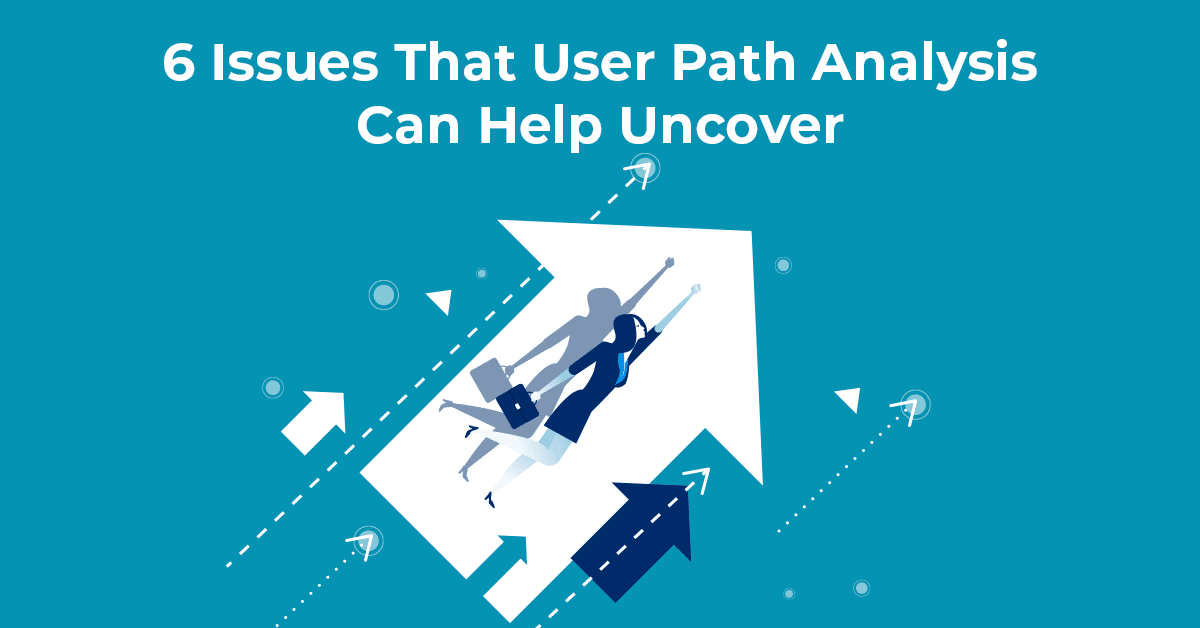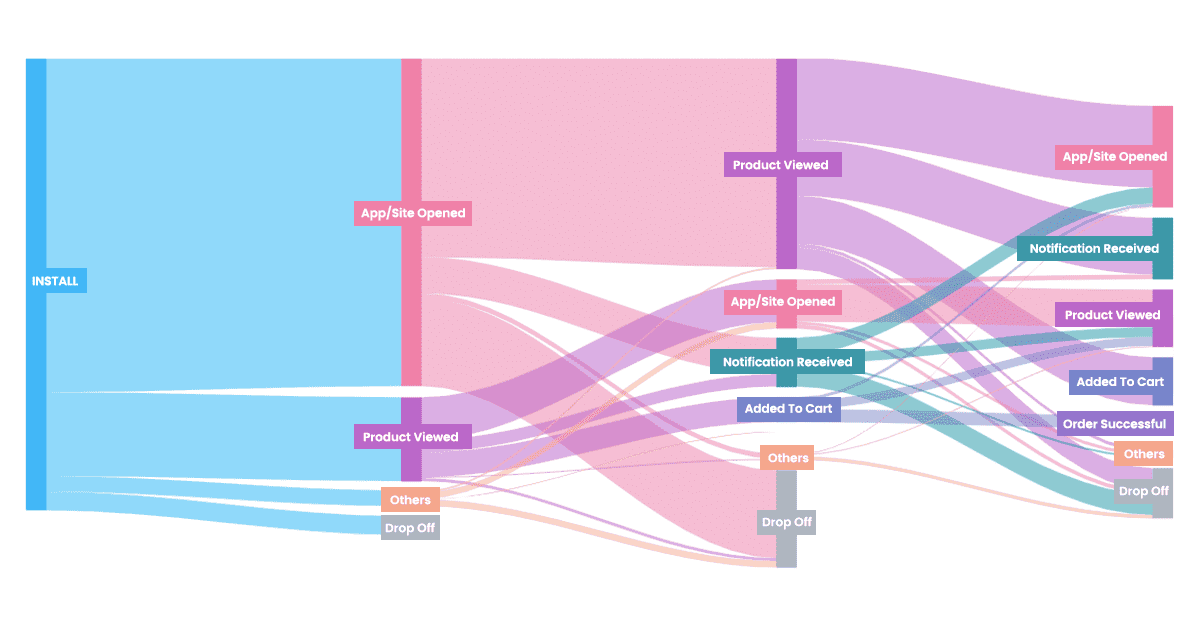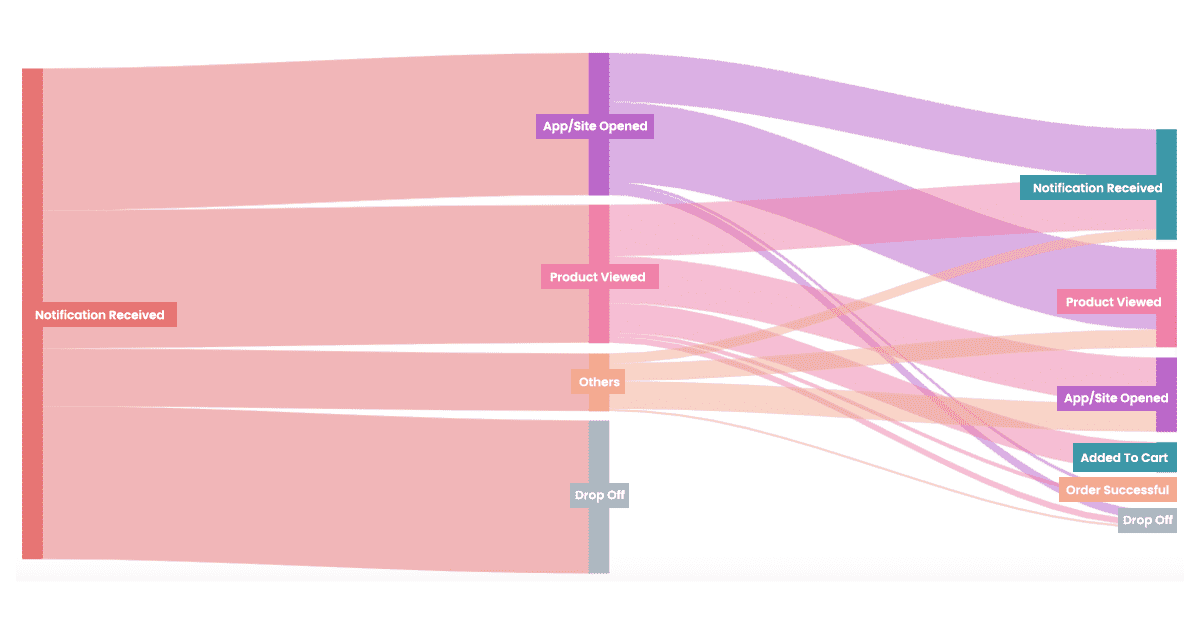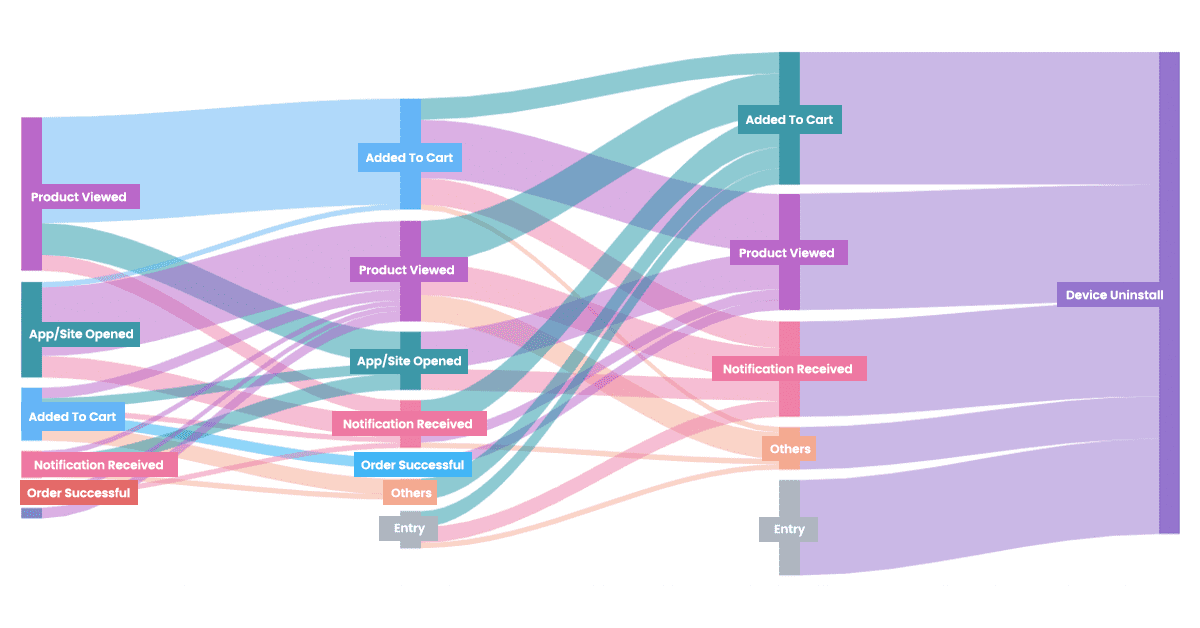6 Issues That User Path Analysis Can Help Uncover

Reading Time: 7 minutes
Product Managers, Growth Marketers, and Retention Managers always look for ways to improve their product experience to maximize the customer lifetime value. For this, analyzing the paths taken by the customers while navigating the product can give you insights into customer behaviors and trends. Here is where ‘User path analysis’ comes into the picture which aids in determining the paths most voyaged during the customer journey.
| Bonus Content
👉 CoinDCX Grow Weekly Active Users to 80% using User Path Analysis [Download Case Study] |
Part of your job is to understand why customers take or leave a particular path, for optimizing the customer experience. Thus, both quantitative and qualitative approaches are needed when analyzing user paths. With the digital analytics capabilities, you will be able to get a consolidated view of customer journeys and experiences providing the overall customer data which you can use as a combative business tool. We’ll discuss the benefits of user path analysis in a bit, but let’s first talk about what it basically is.
What is User Path or User Flow?
A user path is a series of events performed or experienced by the user. This could be pages they visit, tasks they perform, notifications they receive, and so on.
The user paths provide information with which you can improve your user experience by keeping a watch on both positive and negative experiences. Also, getting the answers for most common open-ended questions like:
- What were the main touchpoints during the user journey?
- At which point the user abandoned the cart or transaction?
- Were they successful in entering a particular coupon code?
- Was the navigation along the process smooth?
- What are the users doing just after installing? Or right after opening the app?
- What users do before making a purchase? Or before uninstalling the app?
- What paths do users usually follow between receiving a notification and completing a purchase?
The user path helps you identify patterns resulting in positive user experiences and sales conversions.
Common User Paths
Once the paths navigated by the users are recognized, you can narrow it down by looking at different user segments. That can give you a clear course of action to increase conversion and retention. Here are certain events which you can consider to know the user paths and comprehend the customer’s data:
- When customers click the submit order page and land on the confirmation page leading to a successful conversion.
- When customers place items in their cart but do not submit their order or reach the confirmation page resulting in an abandoned cart.
- Further, these events can be segregated into payment type, the product ordered, coupon code, and which browser through which the conversion factors of the site can be correlated.
- The search terms are frequently used on the site and lead to abandonment pages.
- The videos or other call to action (CTA) on the path pages to know the length of the user paths to conversion.
Once these factors are understood, you may apply user path analysis which is helpful in uncovering the following six issues. All of these issues when mitigated aptly will benefit your business.
Six Issues That User Path Analysis Can Help Uncover
Now, that we have come down to the meat of the article, we will now look into what are the bottlenecks that most users face. For applying the appropriate steps to be taken, it is first important to know the discrepancies that are causing them.
The core benefit of user path analysis lies in the issues it can help uncover. Some of the critical ones are:
- Hurdles in the Onboarding Flow
- Conversion Funnel Leaks
- Bottlenecks Or Friction In The UX
- Erroneous Pages And Broken Links
- Campaign Performance And Influence
- Churn or Uninstalls
Let’s look at each of them in detail and see how you can go about fixing them.
1. Hurdles in the Onboarding Flow

When a user installs and starts using the app or website, there are events that lead to app uninstalling and lesser user engagements. User path analysis is applied to know the ‘uh-oh’ moments that induce uninstallation and the ideal users taking the shortest path to the ‘aha’ moment. There can be also issues in the UI that may lead to lesser conversion. The common patterns resulting in uninstallation and low retention are also the roadblocks that user path analysis can uncover.
How to fix it:
Understand your “aha” moment by studying the paths taken by your high retention and high LTV users. Then set up workflow automation for new users to direct them to the “aha” moment.
2. Conversion Funnel Leaks
Businesses need to identify the reasons why many user journeys do not reach the conversion goal, be it completing a purchase or booking a ride, etc. Possible reasons for user journey not passing through the conversion funnel can be: not targeting the right people, issues with CTA, quality of leads, or friction during signup, or user not finding the right product/service, etc.
Unrestrained funnel leaks can cause a lot of lost revenue. It is thus important to know where leaks are happening so you can take action to fix them in seconds. With competitors selling the same product at different prices, there are likely certain points of the transaction where the users leave the app or website. User path analysis can help to detect the frequency of the drop-offs at every stage.
How to fix it:
On a high level, you can improve the product experience, remove the leaky steps, make the transition smooth. You can also get to the root cause of the issue by dissecting the data by different user segments, time windows, etc. Then set up campaigns specifically targeting the users or fix the underlying cause.
3. Bottlenecks or Friction in the UX:
Internal friction in the UX can lead to a bad impression of the business. It makes users’ interaction with the product far more difficult and causes customers to lose trust over the organization leading to lower conversions, eventually leading to lower company profits. Post onboarding, it is crucial for a business to offer a smooth user experience to its customers. Slow-loading pages, clunky design, excess promotions, unwanted drop-downs, or irritating pop-ups are some of the areas to be fixed as inferred by the user path analysis.
How to fix it:
Once you find inefficiency in the UX, you can reconsider the design and user flow, remove unnecessary steps, combine small and unimportant steps. You can get to an optimal flow with a combination of user feedback, testing, and experimentation.
4. Erroneous Pages and Broken Links
A ‘404 error’ page on your website or a broken link on your app is a completely undesirable event a user can notice. Your business is the reflection of your offerings. Any discrepancies in the UX show lack of professionalism and low quality of service. Customers will lose interest in availing of the services ultimately avoiding getting involved in any business transaction with your company. With user path analysis, the resultant broken links can be spotted and fixed in no time with the received data. This is an important issue to be worked upon and should never get overlooked.
How to fix it:
Thanks to user path analysis, you’ve found the issue. Half the battle is won. Now find the exact page or link causing the broken experience and fix/replace it.
5. Campaign Performance and Influence

What happens after a user receives notification is critical to analyze. Did the user complete the goal? Did they go directly from the notification to the transaction or did they check offers or search for related products? User paths can help understand the direct and indirect impact of your campaigns in driving revenue and growth.
How to fix it:
With each campaign, you can potentially become more efficient at delivering the right message to the right target audience at the right time. As you analyze the user behavior that your campaigns drive, you get an intuitive sense of what works and what doesn’t to improve your conversion rate.
6. Churn or Uninstalls

All of the issues mentioned above can chip away at the customer’s trust in your brand. However, it is also imperative to know why the app was uninstalled as it impacts the overall business performance.
Apps with premium versions or in-app purchases face the most number of drop-offs. The free versions attract more customers. If the users find they do not like the application after installing it, the reasons can be technical issues with the app design or speed.
How to fix it:
This specifically depends on what’s causing the users to uninstall. Once you find it out, you can take specific actions to improve retention and reduce uninstalls. Here are a few examples:
- If the previous step is typically ‘notification received’, then tune the notification frequency.
- If it’s ‘product viewed’, then perhaps users are not finding the right product.
- If users are installing and immediately uninstalling, then they are either fake installs or installs driven by misleading advertisements.
User Path Analysis Benefits
It is now evident why every business wants to analyze the user paths to gain maximum user flow benefits during a product journey. The list about how it can benefit your business is endless but here we are listing down a few of them:
- User flows help to determine the paths that could successfully lead to conversions.
- The user paths can help you understand changing trends in user behavior.
- Gives you observable insights into customers’ experiences to help you identify best practices and areas of improvement for website or app optimization.
- Enhanced insights on customers’ experiences can in turn help in customer satisfaction, raising brand loyalty, and maximizing sales.
The Way Ahead
User path analysis is the best place to start your analysis of users’ experience extremely well. The user flow analysis benefits your business by making you aware of your product’s strengths (or weak spots), user personas, or their altering behaviors. It will help to test and eventually train your intuition for making better business decisions.
But it’s not the end-all. For arming yourself with a high-level understanding of your users, you need to follow up on user path analysis with data analysis to get the core insights and develop an effective marketing strategy.
Give User Paths a try and discover the issues that your customers struggle with when making a product purchase, making bookings online, doing authentication, making banking transactions, or learning online in a precise way!
| Here’s What You Can Read Next |













